
Hares and Harebells: Victorian Botanicals and Medieval Hares
Medieval Medieval Tiles Bestiary Arts & Crafts Pre-Raphaelite Victorian

Medieval Medieval Tiles Bestiary Arts & Crafts Pre-Raphaelite Victorian
Welcome Catalog How to Order Tile Site Map Contact Dragons Articles

The Latin name for harebells is Endymion, the lover of the Titan moon Goddess, Selene, made immortal by John Keats' poem of the same name, which begins:
A thing of beauty is a joy for ever:
Its loveliness increases; it will never
Pass into nothingness; but still will keep
A bower quiet for us, and a sleep
Full of sweet dreams, and health, and quiet breathing.
Endymion chose youth and immortality in eternal sleep. Selene visits him each night in a cave on Mount Latmus.
These tiles bring together the rich mythology of hares and the Victorian fascination with botanicals and floriography (the language of flowers), a means of communication through the way flowers are used and by decrypting their meaning. Coded messages were sent with flowers, expressing feelings that could not be spoken in Victorian society. Shakespeare, Jane Austen, the Brontes, and Frances Hodgson Burnett (The Secret Garden) employed the language of flowers in their writings.
The Pre-Raphaelites, Morris's contemporaries, aimed to revive the artistic values of the late medieval period, making many visual references to literature and mythology.
Hares are a symbol of Spring and fertility, but also of purity. The hare is associated with moonlight. In many Eastern cultures, the Man is the Moon is the Hare in the Moon where the Hare mixes the elixir of immortality. In some cultures, the Hare acts as Mercury, a bearer of messages from the Goddess. Freya, the Norse goddess of Love is served by hare attendants. She travels with a sacred hare beside her in a chariot drawn by cats. And Ostara, the Anglo-Saxon moon goddess whose feast coincides with Easter, was often shown with a hare's head or ears, a hare who laid brightly colored eggs that were given to children during Spring festivals.

The hare is also a trickster. The famous Br'er Rabbit story of the American Soul is a mixture of African hare stories that arrived on slave slips and mixed with the rabbit tales of Native American tribes, such as the Cherokee. In these tales, the Hare wins out against overwhelming odds through his quick wit and superior intelligence.
Harebells is the Scottish term for bluebells, as they grow in fields where hares roam. Indeed, witches may turn into hares and hide among the blue flowers.
Harebells are the favorite flower of faeries, and when rung, summon the fae, making them particularly dangerous. The fairies may whisk away a child alone in a bluebell wood and adults might wander lost for days or years. Many a love potion is made of harebell blossoms. A wreath of harebells will compel the wearer to tell the truth about his or her affections. In folklore, it is unlucky to walk through a mass of bluebells, as it is full of spells, and a wanderer who stumbles into a patch of harebells may not be the same when he returns.
In medieval herbology, bluebells were said to prevent nightmares and used as a remedy for spider-bites, among other things. Bluebells are poisonous, however.
The harebell tiles are based on Victorian botanical prints.
The hare tiles are based on hares by Albrecht Durer (1502) and Hans Hoffman (1582), who based his hare on Albrecht Durer hare, even leaving Durer's mark. The tell is that he changed the date and the date was after Durer's death. The leaping hare is based on a nineteenth century French taxonomical print.
The following sets are available. You may select tiles from any sets. You can watch this video taken in my laundry room (the only room that had good light at that hour).

Princess Harebell is the name of hare from a fairytale in the book Castles and Dragons.
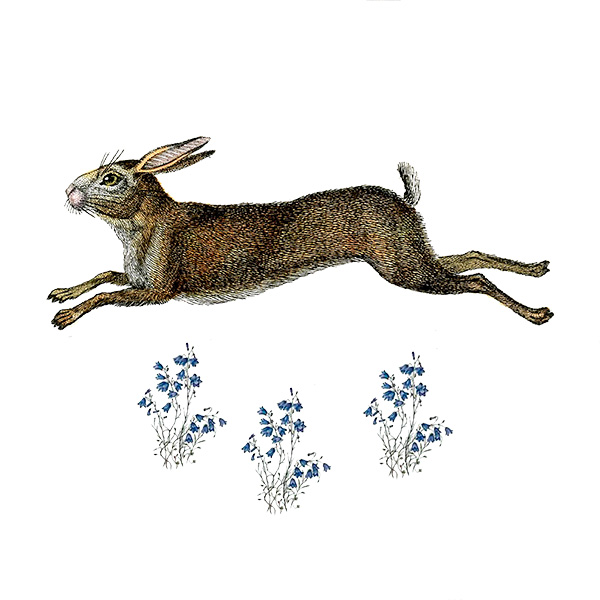
Celtic hare (up to five harebell accents are possible).

Durer hare (first)

Durer hare (second)
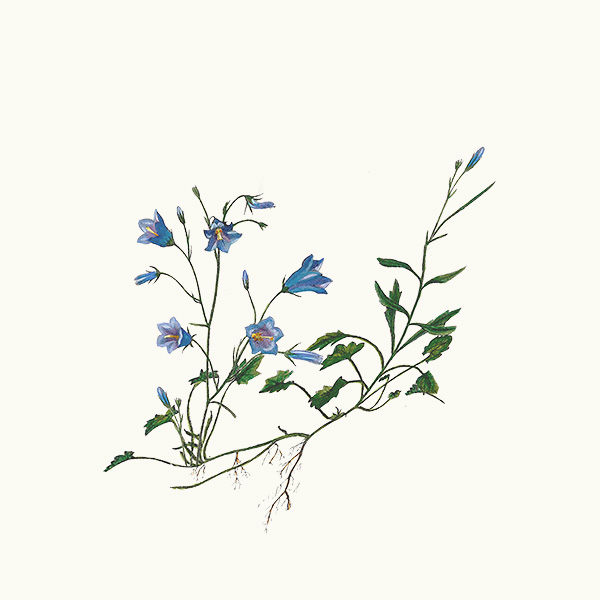
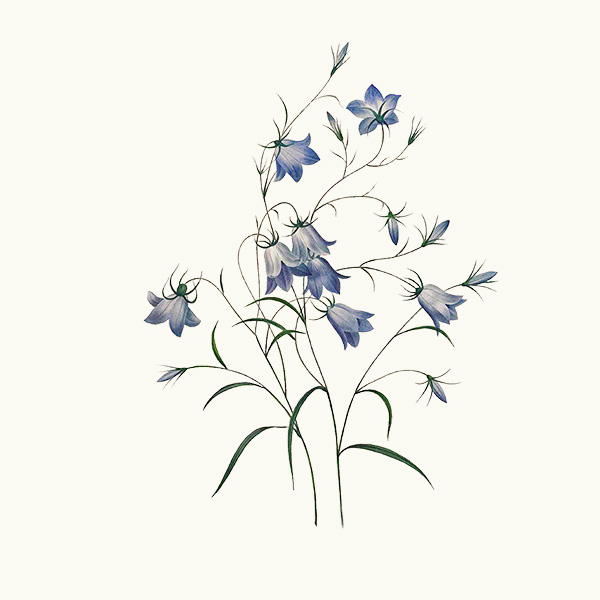
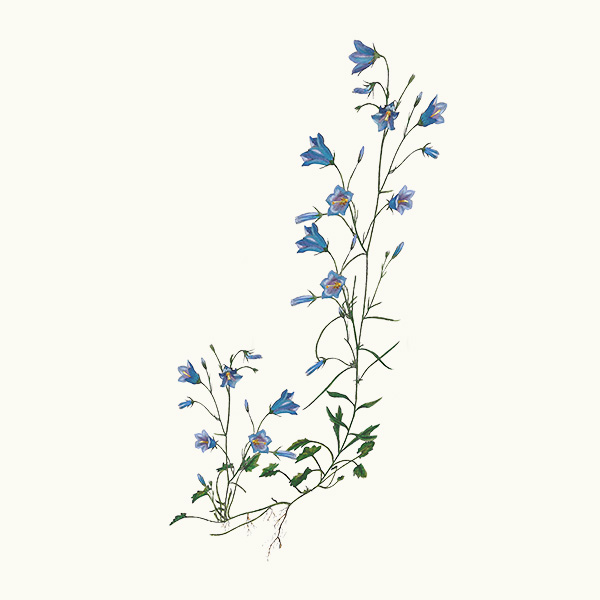
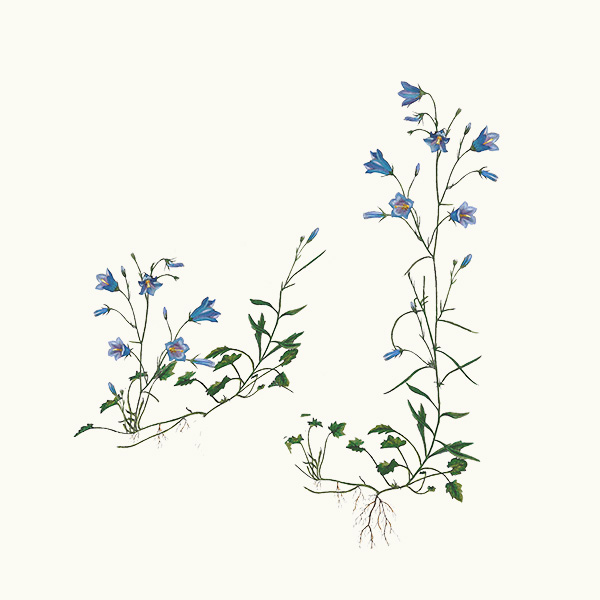
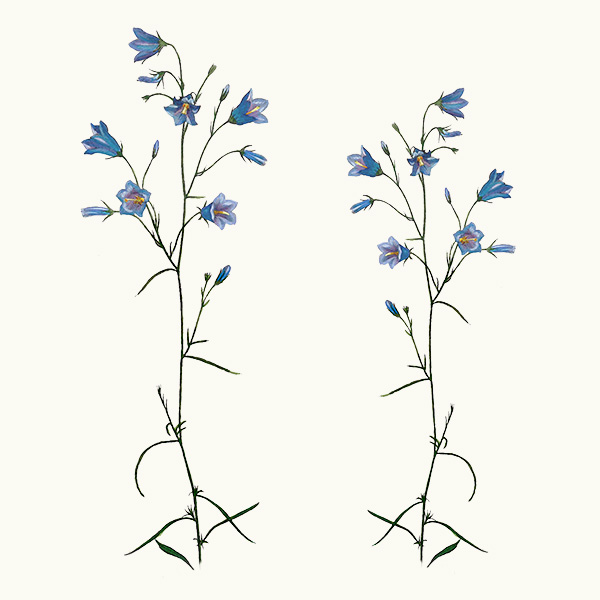

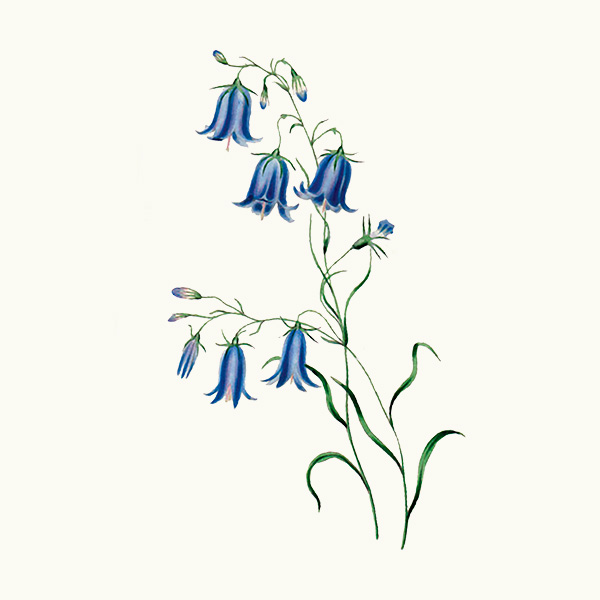
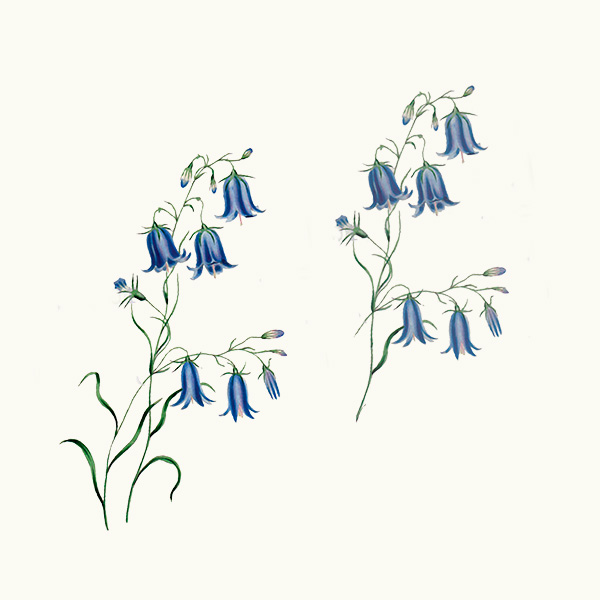
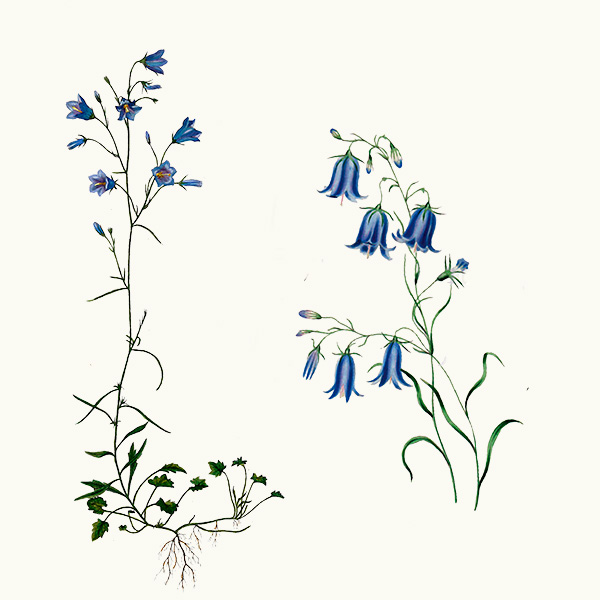
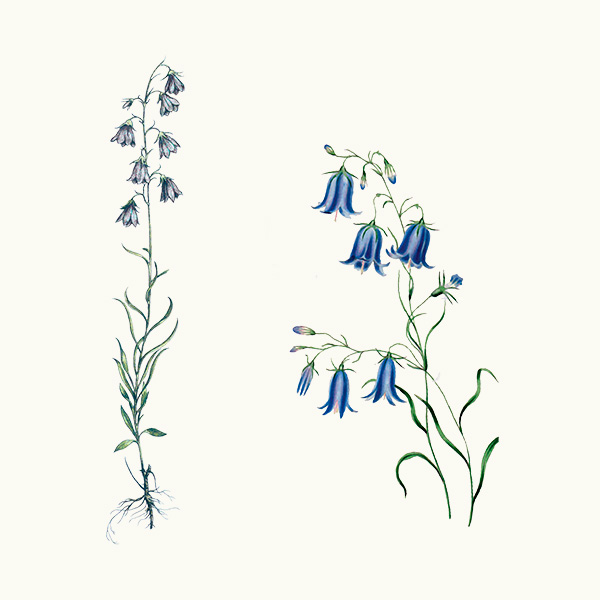
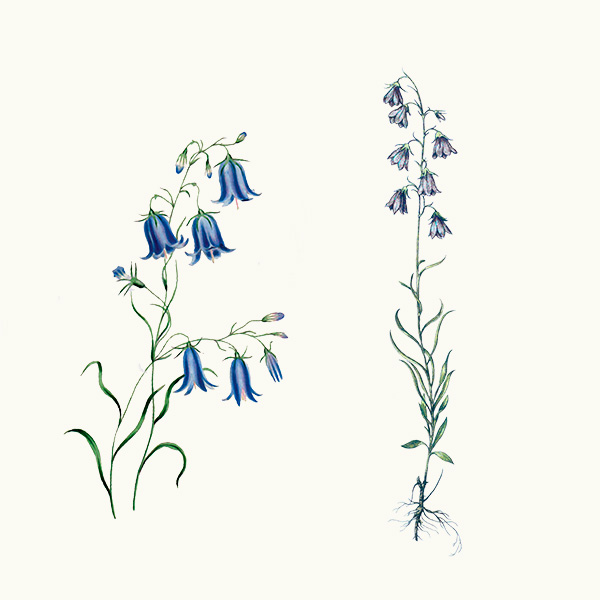
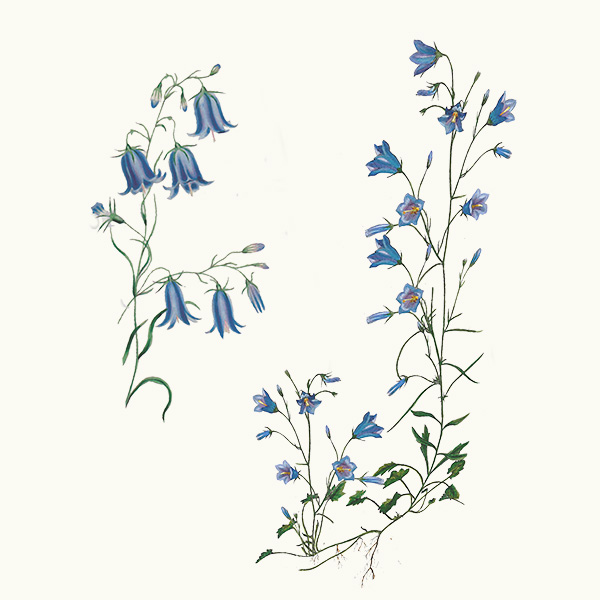
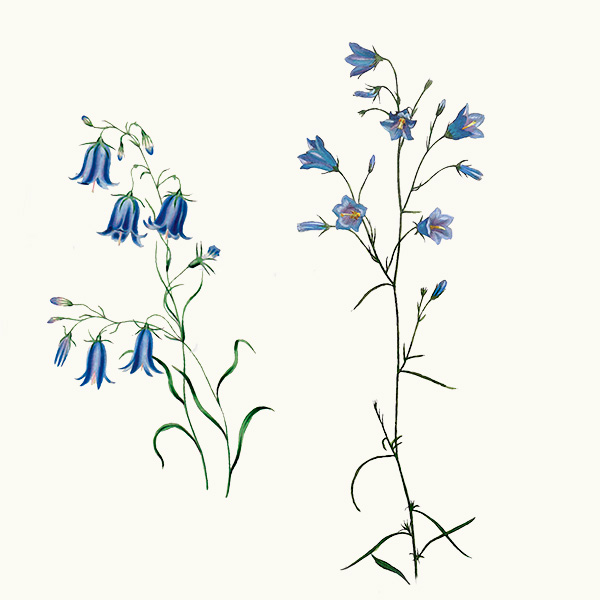



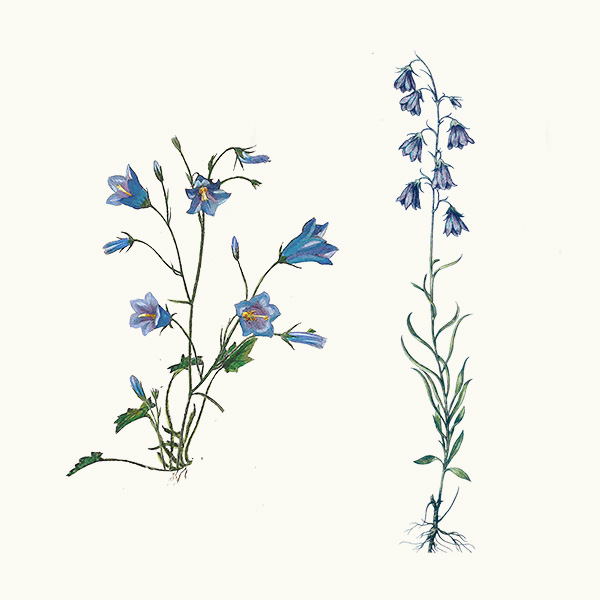
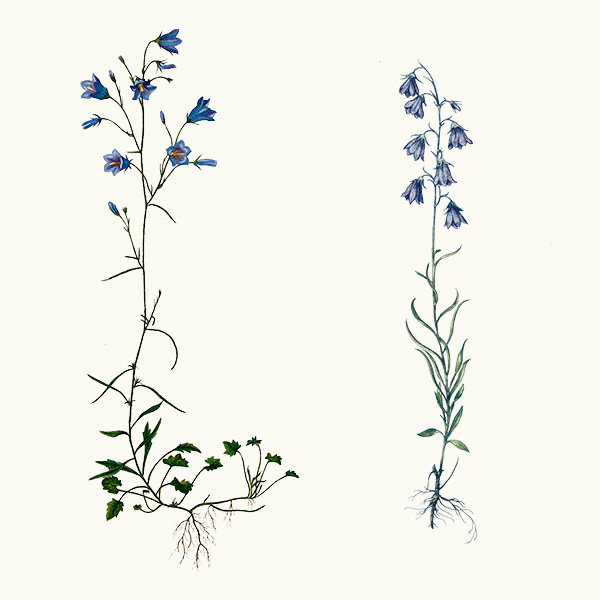
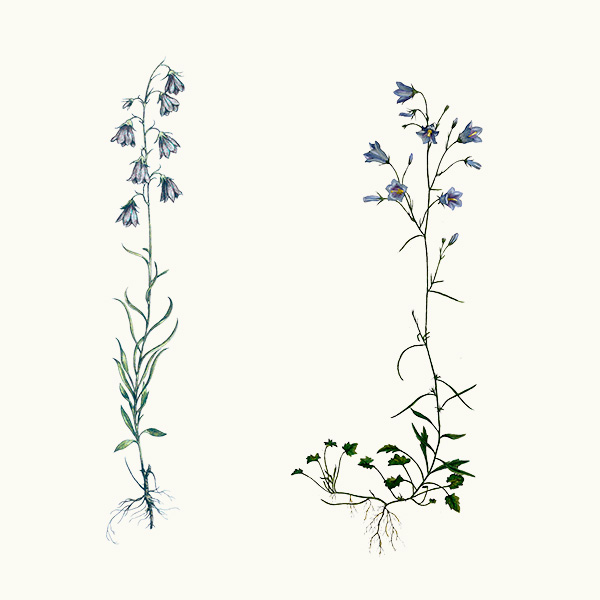
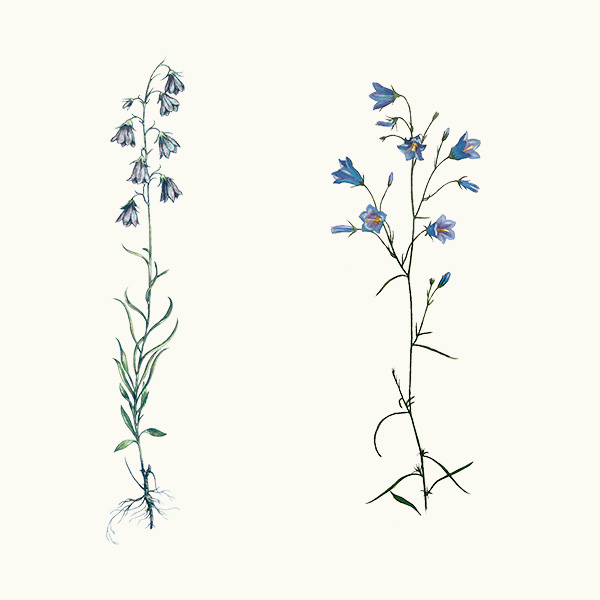
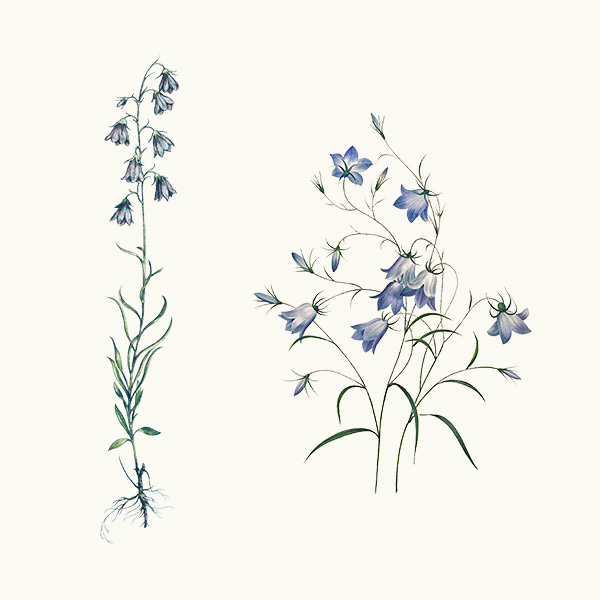

Title: Hares and Harebells
Set: Various Sets
Size: 4.25 and 6 inch tiles
4.25 inch square tiles: $60 each
6 inch square tiles: $68 each
